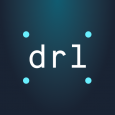Write a Review
Verified Profile
DataRoot Labs - a team of AI experts and the fastest-growing AI company in Ukraine. With offices in Kyiv and Tel-Aviv, we build and implement AI-powered systems across different verticals to help our clients operate effectively.
Our core services include:
- AI Solutions Development
- R&D Team Recruitment
- Startup Venture services
We work with a large number of startups and startup accelerators by fully or partially closing clients' AI development needs.
We ❤ contribute to the development of the ecosystem by running DataRoot University, the largest data science and data engineering school in Ukraine.
Let's bring AI to your story ⚡️
Locations
Ukraine
03056 Kyiv, Poliova Str. 21,
Kyiv,
kyiv
03056
0-800-211-235
Focus Areas
Service Focus
- Artificial Intelligence
- Cloud Computing Services
Client Focus
- Small Business
- Medium Business
Industry Focus
- Startups
- Transportation & Logistics
- Education
DataRoot Labs Clients & Portfolios
.jpg)
.jpg)

